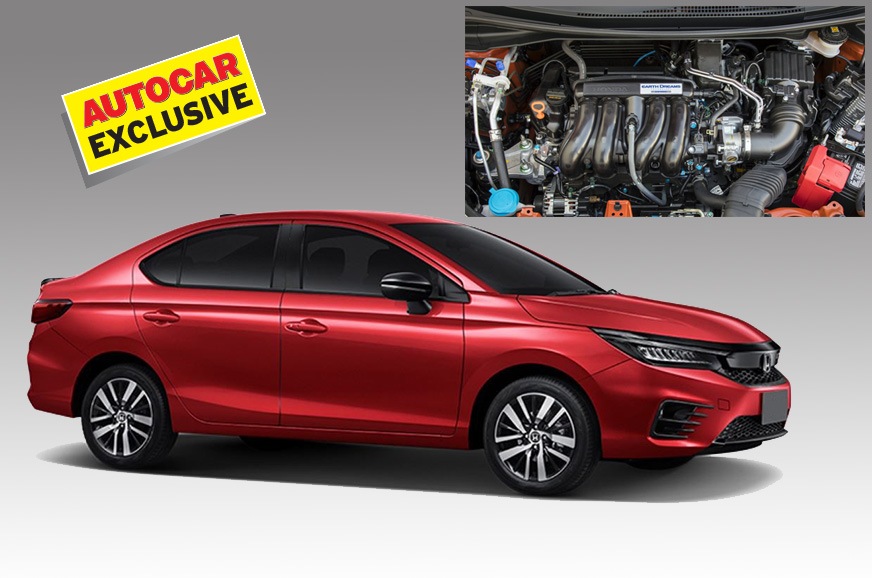New Honda City to get all-new 1.5 petrol engine

Honda's new City will be launched in India soon. Expected to go on sale once the partial lockdown is well underway and showrooms are open, the new City will be offered with both petrol and diesel engines. While the 100hp, 1.5-litre diesel unit will be carried over all but unchanged from the current car - barring the update to make it BS6-compliant - the petrol engine will be new.
The new Honda City available in Thailand comes with a 122hp, 1.0-litre turbocharged engine, though this isn't the unit we will get in India. Ours will continue to be naturally-aspirated and is likely to have a similar capacity as the outgoing one; 1,498cc, as against the current engine's 1,497cc. But that's where the similarities end. The new engine gets a whole new architecture, enhanced technology and new systems that allow it to deliver a broader spread of power, but without sacrificing Honda's famed high engine speed performance.
The biggest difference is that the new Honda City will be the first in India to get a twin-cam or Double Overhead Camshaft (DOHC) setup. Honda's single cam 1.5-litre engine has been one of the highlights of the City, right from the days of the Hyper 16 1.5 engine, way back in 1998 when the City was launched. Honda has carried that single cam engine setup all the way through to today. Now, however, with the move from the L15A to the more modern twin-cam L15B unit, the new City is expected to see advances in the areas of performance and efficiency. This is not apparent if you look at the basic specifications. Peak power is actually only marginally higher, moving from 119hp to 121hp, but Honda insiders we've spoken to say the new engine makes more power at lower engine speeds and in the rest of the powerband.
An earlier build-up of power is actually just what the doctor has ordered for the City. Low-rev response and, more importantly, pulling power have always been a bit of a weak area for the City, and now with the new twin-cam engine, Honda will have greater flexibility when it comes to valve timing, valve overlap and a smooth build up of torque. While we don't have the final figures yet, torque is also expected to be a fair deal higher at around 155Nm, versus 145Nm for the current 1.5 engine.
In some international markets, Honda's L15B engine - which powers the Jazz, Fit and even the City - also includes Variable Timing Control (VTC). Also known as cam phasing, VTC helps the engine breathe better at low, and at high engine speeds. In fact the VTC and i-VTEC systems work seamlessly together - the latter employing a milder cam profile at low speeds and a more aggressive one at higher speeds. This engine also gets larger intake and exhaust valves for better breathing and also a higher compression ratio; as high as 11.5:1 in most cases (up from 10.4:1 or specifically 10.3:1 in our case), because it can deal with pre-detonation or pinking better. Also enhanced, and significantly so, are rotating masses. The crankshaft is now around 25 percent lighter, which also helps make the engine more responsive. While the bore and stroke of the pistons are near-identical, the new pistons get up-rated oil jets for enhanced cooling and aluminium sleeves that sit over the normal cylinder sleeve for better heat transfer.
So while the new engine may not quite have the 173Nm of torque that the 1.0-litre turbo engine gets in Thailand, it will still have that zingy and strong high rpm performance, with the engine spinning all the way to 7,000rpm. And with this new engine, pulling power should be enhanced too, which actually could deliver the best of both worlds. All-in-all a lot to look forward to on Honda's new City.
Also see:
New Honda City to be sold alongside outgoing model
New Honda SUV likely to be christened ZR-V



No comments: